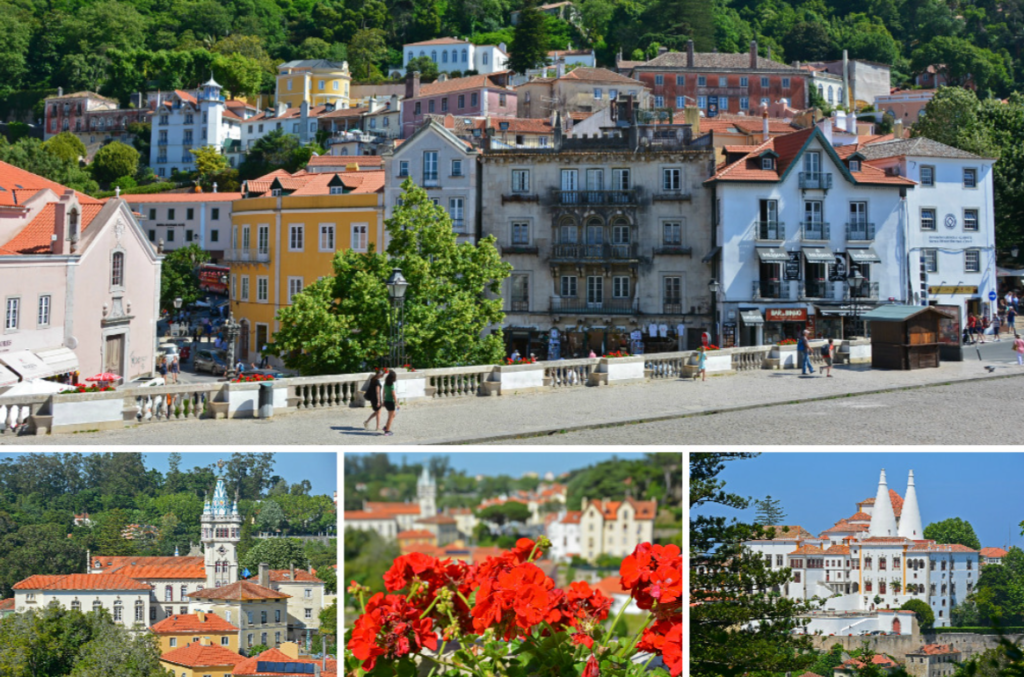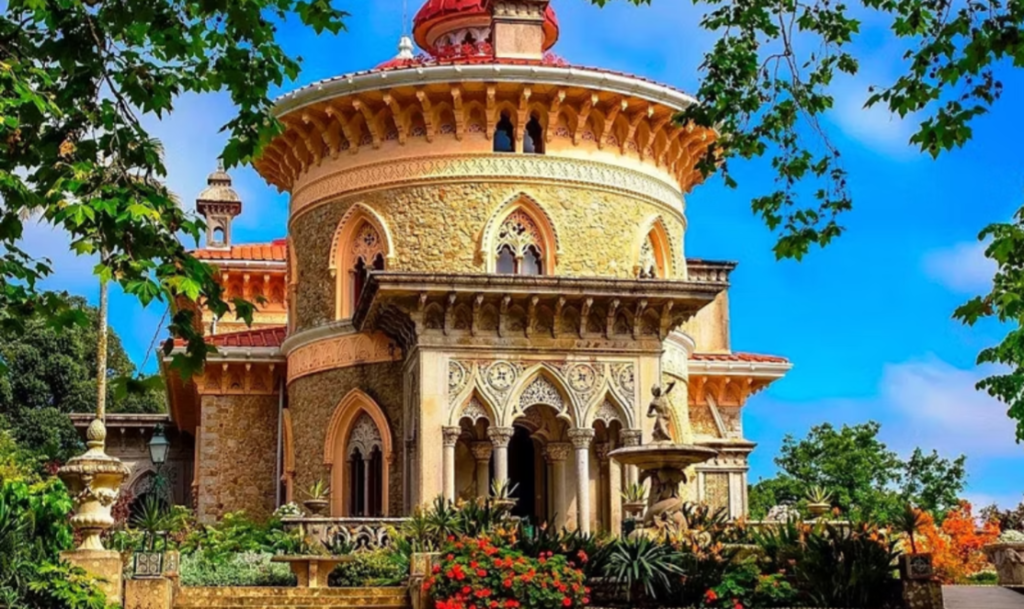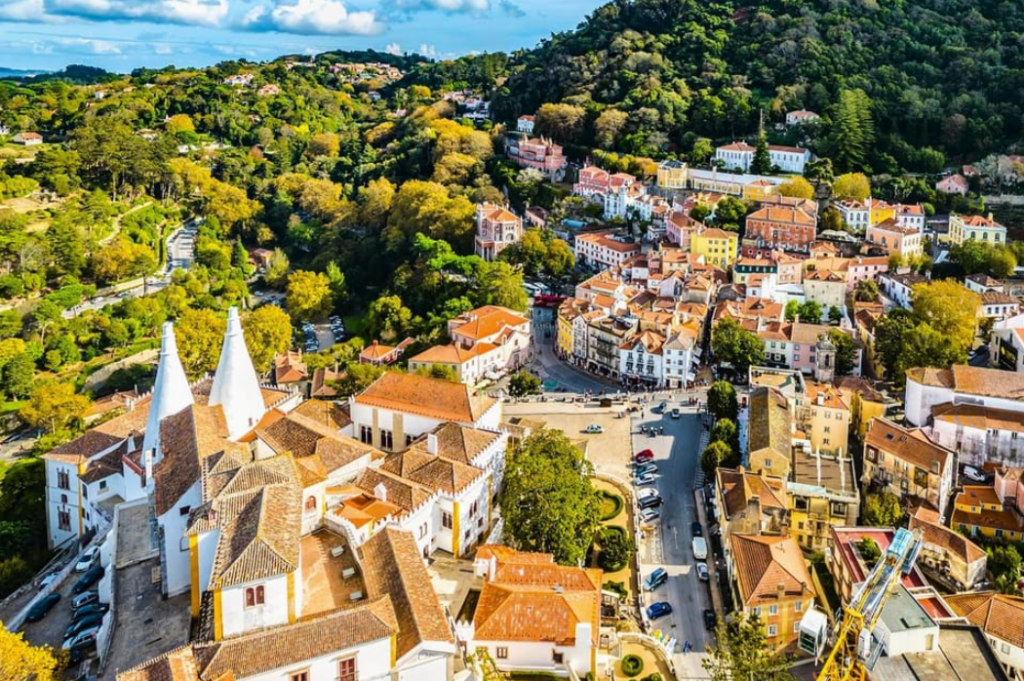Sintra, Portugal: Romantic Palaces and Gardens
Sintra, a picturesque town nestled in the hills of Portugal’s Serra de Sintra, is a place where history, nature, and romance converge. Often described as a fairytale destination, Sintra is renowned for its stunning palaces, enchanting gardens, and breathtaking landscapes. A UNESCO World Heritage Site, this charming town has long been a retreat for royalty, artists, and dreamers, offering a harmonious blend of architectural splendor and natural beauty. From the colorful Palácio da Pena to the mystical Quinta da Regaleira, Sintra invites visitors into a world of wonder and imagination.

A Retreat for Royalty and Inspiration
Sintra’s allure dates back centuries, with its cool climate and lush greenery attracting the Portuguese nobility and aristocracy. The town became a favored retreat during the Romantic period of the 19th century, inspiring poets, artists, and architects to create masterpieces that celebrated nature and imagination. Today, Sintra retains its magical atmosphere, drawing travelers from around the globe to explore its storied past and captivating landscapes.

Palácio da Pena: A Fairytale on a Hill
The Palácio da Pena is Sintra’s most iconic landmark and a quintessential example of Romantic architecture. Perched atop a hill, this vibrant palace is visible from miles around, with its colorful façades, intricate detailing, and whimsical design capturing the essence of fantasy.
History of the Palace
Originally a medieval chapel dedicated to Our Lady of Pena, the site was transformed into a palace in the 19th century by King Ferdinand II. A visionary of his time, Ferdinand combined Gothic, Renaissance, Moorish, and Manueline styles to create a structure that defied convention and celebrated artistic freedom.
Highlights of Palácio da Pena
- The Courtyards: The palace’s courtyards feature vibrant tiles, ornate arches, and sweeping views of the surrounding hills and coastline.
- The Triton Gate: This striking entrance is adorned with a sculpture of a mythical triton, symbolizing the connection between land and sea.
- The Interiors: Inside, the palace boasts opulent rooms furnished with period pieces, including the royal dining room, private chambers, and the chapel.
- The Pena Park: Surrounding the palace is the sprawling Pena Park, a lush garden filled with exotic plants, meandering paths, and hidden pavilions.

Quinta da Regaleira: Mystical and Enigmatic
The Quinta da Regaleira is a masterpiece of Romanticism and one of Sintra’s most fascinating attractions. Built in the early 20th century by António Augusto Carvalho Monteiro, a wealthy Brazilian-Portuguese businessman, this estate combines Gothic, Manueline, and Renaissance influences with esoteric symbolism.
The Palácio da Regaleira
The estate’s main building, the Palácio da Regaleira, is an ornate mansion featuring carved stonework, intricate wood panels, and stained-glass windows. The mansion exudes mystery, with every detail hinting at Monteiro’s interest in mysticism, alchemy, and Freemasonry.
The Gardens of Quinta da Regaleira
The gardens are the true highlight of the estate, designed as an allegorical journey through the cosmos. Key features include:
- The Initiation Well: A spiraling underground staircase that descends into the earth, symbolizing a journey of initiation and enlightenment.
- Grottos and Tunnels: Hidden pathways and caves add an air of mystery and adventure to the gardens.
- Symbolic Statues: Statues of gods, mythical creatures, and esoteric symbols are scattered throughout, blending nature with mysticism.

Palácio de Monserrate: Exotic Elegance
The Palácio de Monserrate is another gem in Sintra, celebrated for its exotic architecture and lush gardens. This 19th-century palace, commissioned by Sir Francis Cook, a British merchant, is a blend of Gothic, Moorish, and Indian styles, reflecting the eclectic tastes of the Romantic era.
The Palace
The palace’s exterior is adorned with intricate stonework, arches, and domes, while its interiors feature ornate ceilings, marble floors, and beautifully restored rooms. The fusion of architectural styles creates a sense of timeless elegance.
The Gardens
The Monserrate Gardens are among the most diverse botanical collections in Portugal, home to species from around the world. Highlights include:
- The Rose Garden: A vibrant collection of roses in various colors and fragrances.
- Exotic Trees: Rare species from Asia, Africa, and the Americas, such as araucarias, palms, and cycads.
- Water Features: Cascading waterfalls, serene ponds, and charming fountains add to the gardens’ tranquility.
Castelo dos Mouros: A Fortress in the Sky
The Castelo dos Mouros (Moorish Castle) is a historic fortress that dates back to the 9th century, built during the period of Islamic rule in the Iberian Peninsula. Perched high on the hills, this medieval castle offers panoramic views of Sintra and the Atlantic Ocean.
Exploring the Castle
- The Walls: The castle’s well-preserved ramparts stretch along the hilltops, providing breathtaking views and a glimpse into its defensive purpose.
- The Towers: Visitors can climb the watchtowers for sweeping vistas of the surrounding landscape.
- Historical Artifacts: Excavations within the castle have uncovered artifacts from the Moorish and Christian periods, showcasing its layered history.

Sintra Village: A Charming Escape
At the heart of the region lies the charming Sintra Village (Vila de Sintra), a delightful area filled with cobblestone streets, pastel-colored houses, and bustling squares. Highlights include:
- Sintra National Palace: Located in the town center, this palace features iconic twin chimneys and beautifully decorated interiors.
- Local Shops: The village is home to artisan shops selling handmade crafts, ceramics, and textiles.
- Cafés and Bakeries: Don’t miss the chance to try Sintra’s famous pastries, including travesseiros (flaky puff pastries filled with almond cream) and queijadas (sweet cheese tarts).

Exploring the Natural Beauty of Sintra
Beyond its palaces and gardens, Sintra is surrounded by natural beauty that adds to its charm. The Sintra-Cascais Natural Park is a protected area that encompasses forests, cliffs, and beaches, making it a haven for outdoor enthusiasts.
Cabo da Roca
Located within the park, Cabo da Roca is the westernmost point of mainland Europe. Its rugged cliffs and sweeping ocean views create a dramatic and awe-inspiring setting.
Hiking Trails
Sintra offers a variety of hiking trails that wind through its hills and forests, providing opportunities to discover hidden gems and enjoy breathtaking vistas.
Practical Tips for Visiting Sintra
- Getting There: Sintra is an easy day trip from Lisbon, located about 30 kilometers (19 miles) away. Trains run regularly between Lisbon and Sintra, with a journey time of around 40 minutes.
- Best Time to Visit: Spring and autumn offer pleasant weather and fewer crowds, making these seasons ideal for exploring Sintra’s attractions.
- Transportation: The town’s hilly terrain makes walking challenging, but local buses and tuk-tuks provide convenient options for getting around.
Why Sintra Captivates Visitors
Sintra’s magical blend of history, nature, and romance has made it one of Portugal’s most beloved destinations. Whether you’re marveling at the colorful turrets of Palácio da Pena, wandering through the mystical gardens of Quinta da Regaleira, or savoring the charm of its village streets, Sintra offers an experience that feels like stepping into a storybook.
For travelers seeking a destination that combines architectural grandeur, lush landscapes, and a touch of fantasy, Sintra is an unforgettable escape into a world of beauty and wonder.
